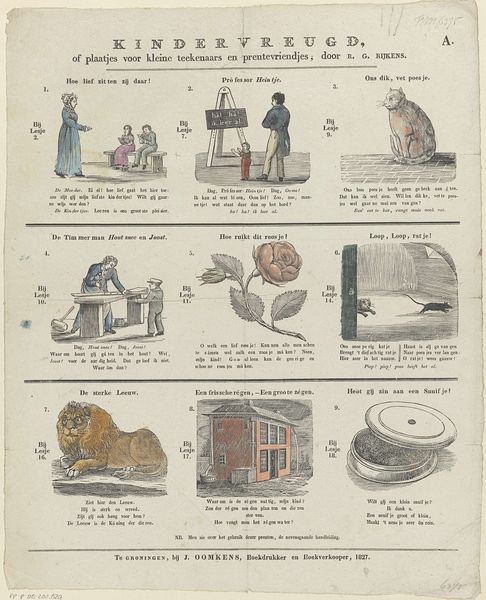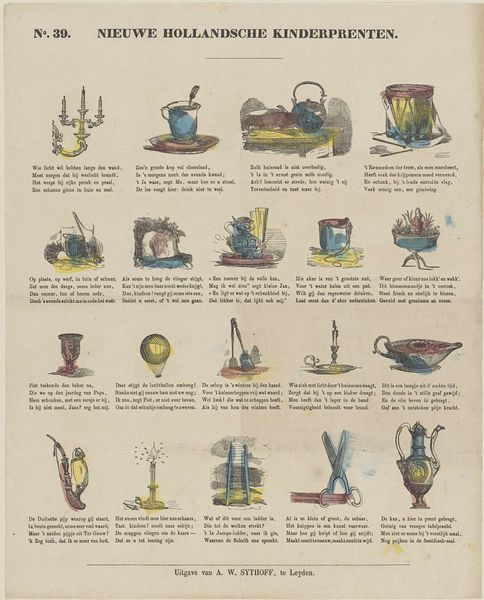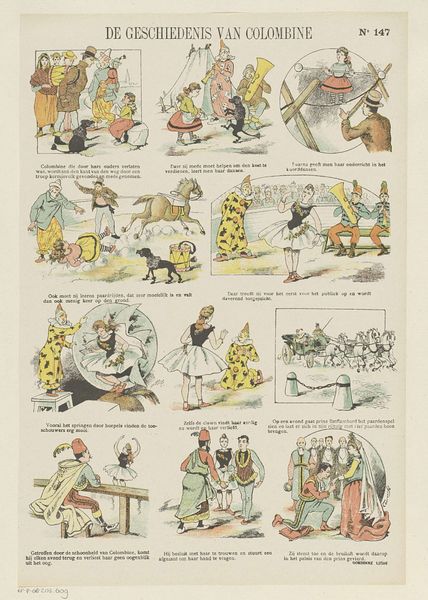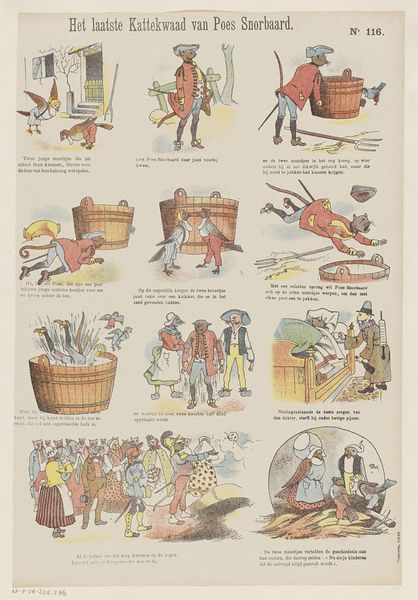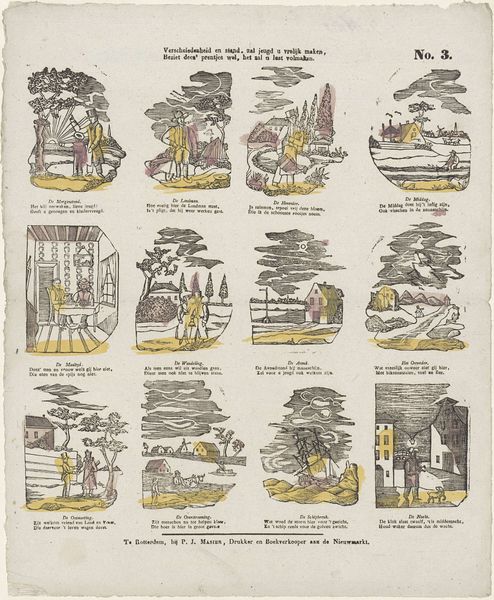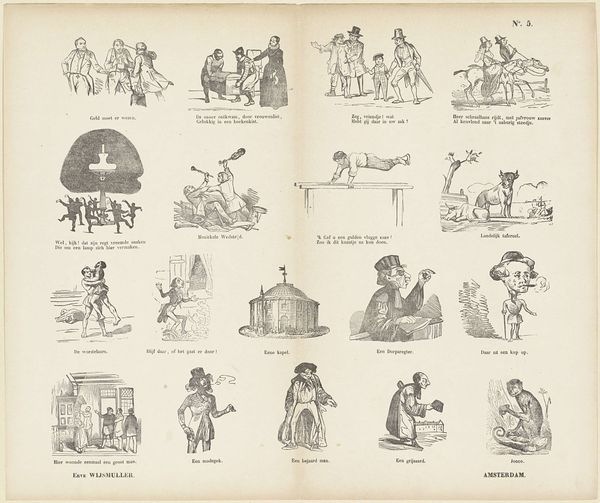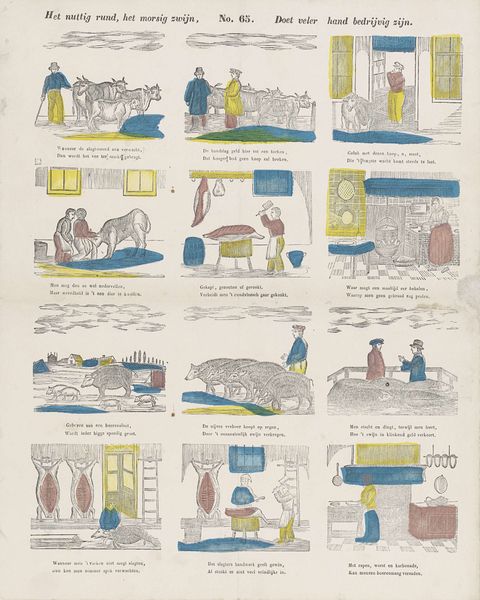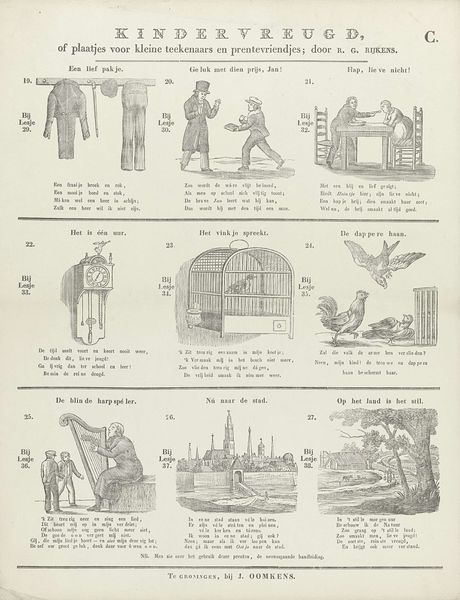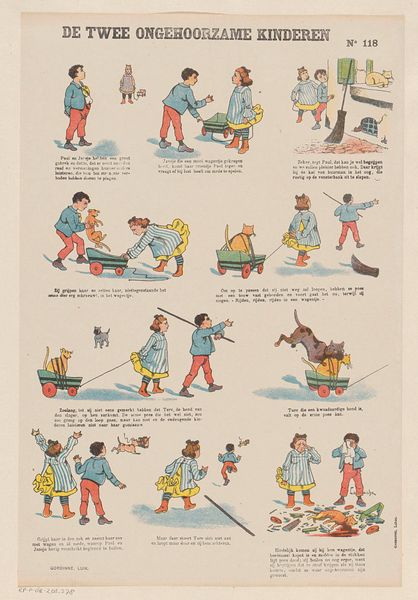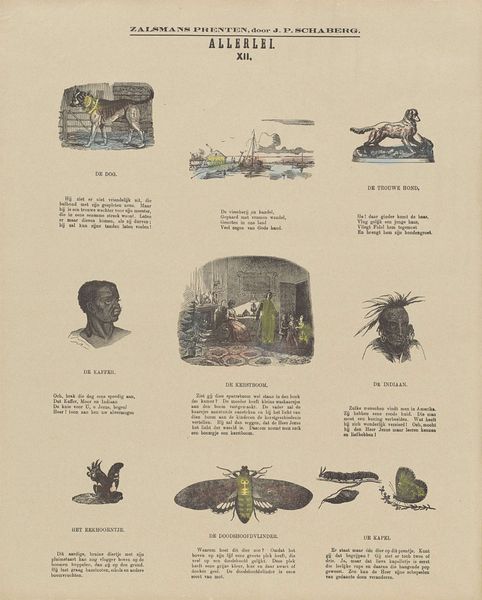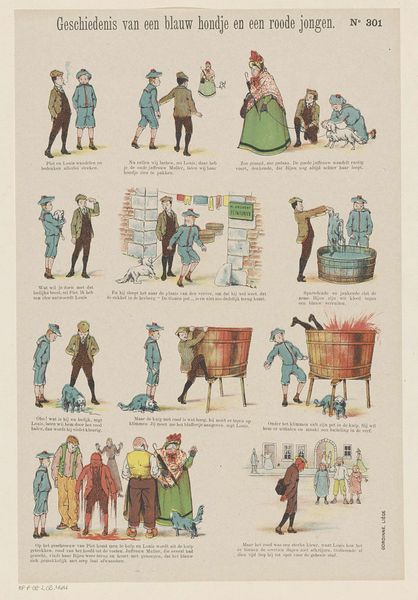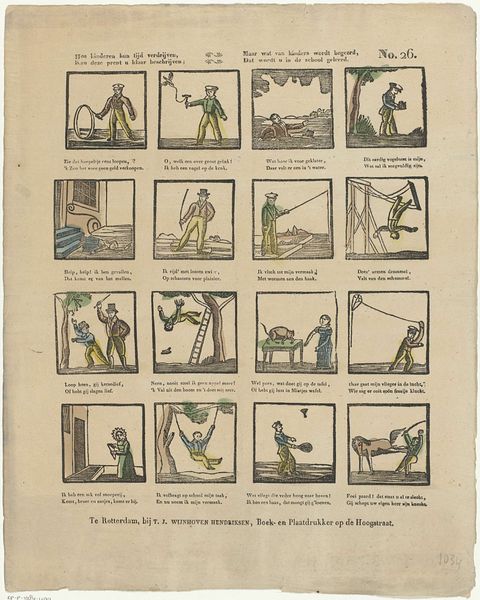
Kindervreugd / of plaatjes voor kleine teekenaars en prentevriendjes; door R. G. Rijkens 1827
0:00
0:00
graphic-art, print
#
graphic-art
#
comic strip sketch
#
quirky sketch
# print
#
sketch book
#
personal sketchbook
#
idea generation sketch
#
sketchwork
#
journal
#
sketchbook drawing
#
genre-painting
#
storyboard and sketchbook work
#
sketchbook art
Dimensions: height 409 mm, width 321 mm
Copyright: Rijks Museum: Open Domain
Editor: This print from 1827, "Kindervreugd," by R. G. Rijkens, it’s subtitled "Pictures for Little Draughtsmen and Print-lovers". It's so charming, like an early comic strip with these little scenes and captions. What do you make of this work? Curator: Indeed! These images pull us back into a particular vision of childhood. Think about the symbols being presented: a pear, a comb, children learning... what narratives are woven into them? Editor: Well, some seem straightforward, like the child breaking a window and being scolded, but others are less clear, what about the images of learning or play? Curator: Consider how each scene encapsulates a specific moral or lesson. Each carefully chosen visual would serve as an easily remembered signifier to promote expected social behaviors to young audiences. What sort of continuity of value is there? What purpose are children in service of in this piece? Editor: So, it's not just about entertaining, but about shaping young minds through symbols that are supposed to carry meaning and instruct them on their roles in society. It’s fascinating how simple pictures were used for moral instruction. Curator: Precisely! These weren't just pictures, they were carefully constructed narratives embedded with cultural expectations. You have to consider which types of values still resonate and which we have rejected today. Editor: It makes me rethink the power of visual media, even in its simplest forms, to influence how we understand the world. Thanks! Curator: Likewise, it is crucial that these visual devices never go unquestioned.
Comments
No comments
Be the first to comment and join the conversation on the ultimate creative platform.
